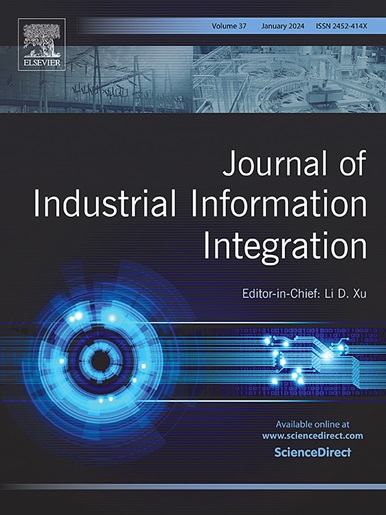Switching fuzzy transfer learning for multimodal reservoir fuzzy echo state networks
IF 10.4
1区 计算机科学
Q1 COMPUTER SCIENCE, INTERDISCIPLINARY APPLICATIONS
引用次数: 0
Abstract
In this study, an interesting yet previously uncared concept—switching fuzzy transfer learning for multimodal reservoir echo state networks—is proposed from three overwhelming phenomena under multimodal reservoir transfer learning environments. Due to the use of reservoir transition, the first phenomenon that the discrimination between different classes along each modal may perhaps be weakened actually encourages the use of fuzzy classification. And then the second one is that source and target domains may occasionally have more overlapping caused by the randomness of reservoir computing, which actually encourages the use of fuzzy similarity for these two domains. The third one that the similarity between source and target domains along each modal and even across different modals may perhaps be distorted inspires the switching of transfer learning across modals. This study explores a novel switching fuzzy transfer learning (SFTL) framework for multimodal reservoir echo state networks. SFTL begins with the calculation of the theoretically derived fuzzy reservoir Stein discrepancies (fuzzy RSDs) between target domain and source domains in the same and even different modals. After that, SFTL trains each modal’s fuzzy transfer learning classifier by taking the proposed adaptive multimodal source switching strategy for an appropriate source domain selection. Finally, SFTL achieves promising multimodal learning through moving from linear aggregation level of each fuzzy transfer learning classifier to the mixture level of both this linear aggregation and the switching ensemble of multimodal source domains. The comprehensive experiments on 31 adopted datasets demonstrate the superiority of SFTL, achieving an average classification accuracy of 85.00 % in the focused multimodal reservoir transfer learning scenario.
多模态水库模糊回声状态网络的切换模糊迁移学习
在本研究中,从多模态水库迁移学习环境下的三种压倒性现象出发,提出了一个有趣但以前未被注意的概念切换模糊迁移学习。由于水库过渡的使用,第一种现象,即沿每个模态的不同类别之间的区别可能被削弱,实际上鼓励使用模糊分类。其次,由于储层计算的随机性,源域和目标域偶尔会有更多的重叠,这实际上鼓励了对这两个域使用模糊相似度。第三,源域和目标域在每个模态上甚至在不同模态上的相似性可能被扭曲,这激发了跨模态迁移学习的切换。研究了一种新的多模态水库回声状态网络切换模糊迁移学习(SFTL)框架。SFTL首先计算理论推导的目标域与源域在相同甚至不同模态下的模糊储层斯坦因差异(fuzzy rsd)。然后,SFTL采用本文提出的自适应多模态源切换策略对每个模态的模糊迁移学习分类器进行训练,选择合适的源域。最后,SFTL通过从每个模糊迁移学习分类器的线性聚集级别移动到该线性聚集和多模态源域切换集成的混合级别,实现了有前途的多模态学习。在31个数据集上的综合实验证明了SFTL的优越性,在集中的多模态水库转移学习场景下,SFTL的平均分类准确率达到85.00%。
本文章由计算机程序翻译,如有差异,请以英文原文为准。
求助全文
约1分钟内获得全文
求助全文
来源期刊

Journal of Industrial Information Integration
Decision Sciences-Information Systems and Management
CiteScore
22.30
自引率
13.40%
发文量
100
期刊介绍:
The Journal of Industrial Information Integration focuses on the industry's transition towards industrial integration and informatization, covering not only hardware and software but also information integration. It serves as a platform for promoting advances in industrial information integration, addressing challenges, issues, and solutions in an interdisciplinary forum for researchers, practitioners, and policy makers.
The Journal of Industrial Information Integration welcomes papers on foundational, technical, and practical aspects of industrial information integration, emphasizing the complex and cross-disciplinary topics that arise in industrial integration. Techniques from mathematical science, computer science, computer engineering, electrical and electronic engineering, manufacturing engineering, and engineering management are crucial in this context.
 求助内容:
求助内容: 应助结果提醒方式:
应助结果提醒方式:


